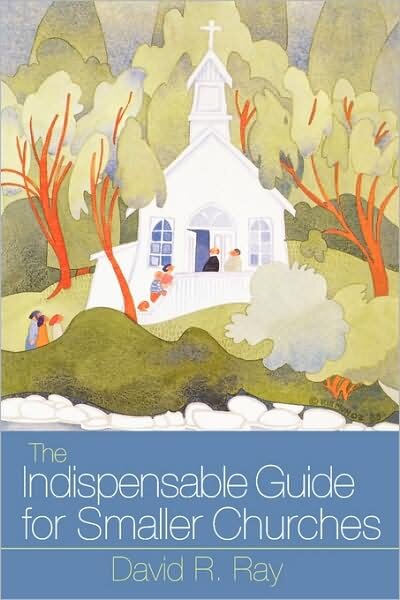David Ray, The Indispensable Guide for Smaller Churches. Pilgrim Press, 2003.
Referenced in: Small Church Leadership
LifeandLeadership.com Summary
This is the closest thing to an “Encyclopedia of Small Church Development” one may find. Ray takes the best concepts covered by most other authors on the subject and ties them into one text. In a survey of literature on small churches, one may run upon other volumes by Ray such as The Small Churches Are the Right Size (1982) and The Big Small Church Book (1992). Whether intentional or not, this book replaces both of them.
The first three chapters provide the theoretical and theological foundations. He begins with brief descriptions of 21 small churches, mostly United Church of Christ fellowships, conveying appreciation for each as a unique expression of God’s grace, but then extracts out of these varied groups 11 common denominators of small congregations. From there he offers a small-church theology, which will appeal to all who want to develop their churches from a sound ecclesiology (though I find his remnant comments a bit strained). Chapter 3 provides the most thorough survey of congregational theory on small churches, including primary group (Cooley); single cell (Dudley); rule of 150 (Dunbar); church typologies (Schaller); size categories (Rothauge); social type, social context, social position, organization types, cultural appeal (Walrath); folk society (Pappas), small church characters (Foltz), congregational life cycles (Saarinen, Mann), and emotional systems (Friedman, Steinke). Ray synthesizes these theories and his experience into his list of “Thirty Common Characteristics of Small Churches,” which in my opinion is an unparalleled distillation of the essential sociological and theological features of small-membership congregations.
Chapters 4-10 build upon these foundations by offering practical help in several areas of congregational life. The chapter on worship is a summation of material developed more thoroughly in Ray’s Wonderful Worship in Smaller Churches (2000), listing the twelve principles and fifteen practices for worship in small churches along with suggestions on five subjects critical to worship renewal. This is followed by insightful chapters on education, congregational care (the list on 79 Caring Strategies is rich), mission (includes two possible planning processes), raising morale (one of the most helpful chapters in the book), growth, and money. The chapter on growth offers a realistic perspective most small church leaders will appreciate. He does not argue that small churches must grow in order to reach a “respectable” size or to perpetuate and enlarge the institution, but should do evangelism for “right and faithful” reasons. He adds that for most small churches, “growth is preferable when it is intentional, slow, and steady” and usually happens more by adoption than by addition, multiplication, division, or assimilation.
The appendices include a few helpful tools to use the book in an intentional assessment and planning process.
If you are looking for the “one book” on small church development, this is it.
From the Publisher
The Indispensable Guide for Smaller Churches is filled with solid theology on the one hand and practical applications on the other. Ray shares the best of his discoveries during more than 30 years as pastor, denominational leader, and consultant to small churches.
This book complements the author’s earlier titles from The Pilgrim Press: The Big Small Church Book (1992) and Wonderful Worship in Smaller Churches (2000). Ray expands on the earlier works by treating such subjects as communal theology, theories and tools for understanding smaller churches, worship, education, and finance. His vision is to lead ever smaller churches toward the year 2030.
About the Author
DAVID R. RAY is pastor of First Congregational Church, United Church of Christ, San Rafael, CA. He received his D.Min. from Hartford Seminary and his M.Div. from Andover Newton Theological School. He has provided program leadership on small church issues around the country, and taught small church ministry in seminaries.
***For additional information on this resource, including reviews, click the bookstore links. Check the reference at page top or the links below for resource guides on related topics.***
See Resources on Over 100 Areas of Ministry Leadership:


